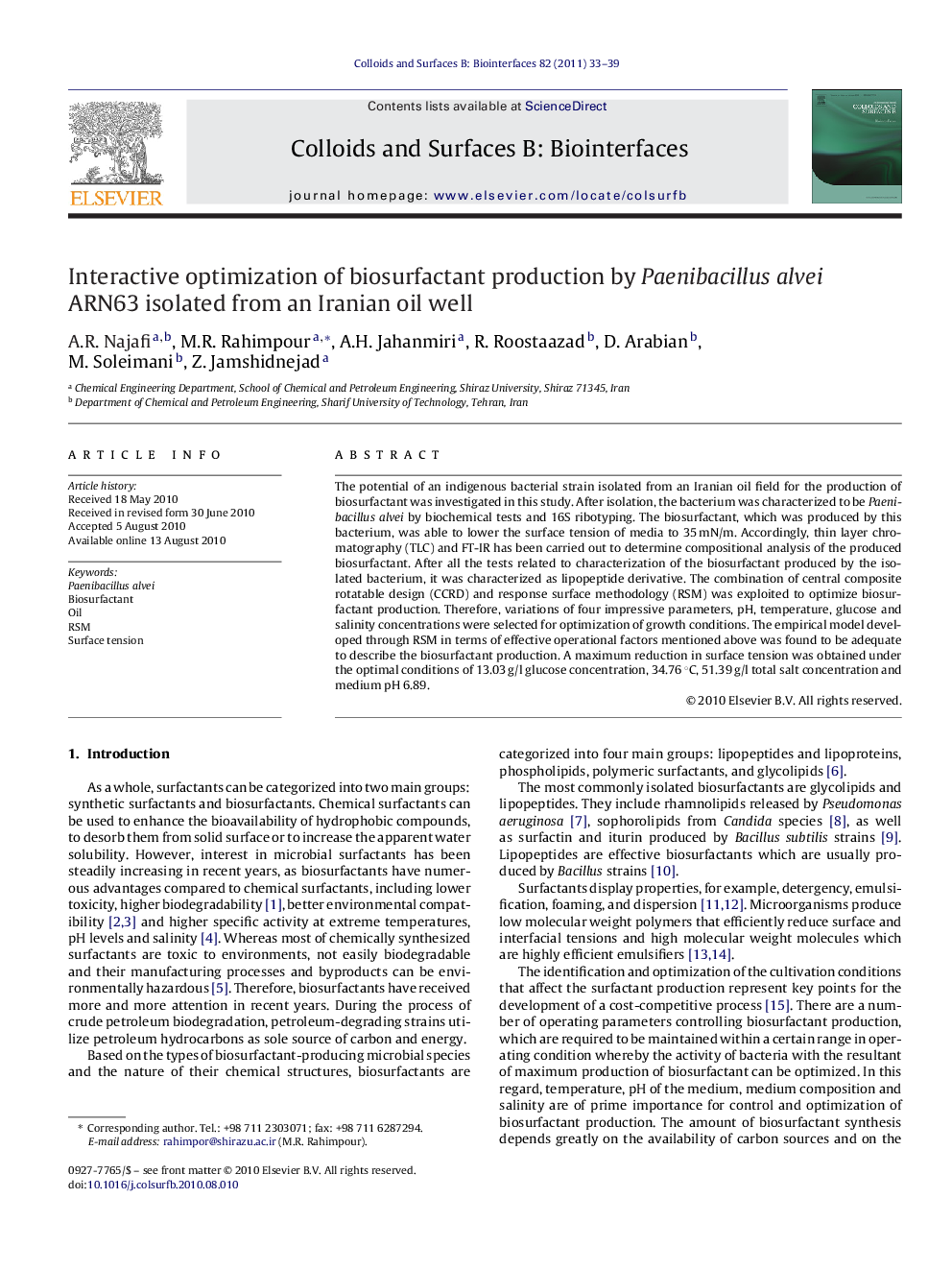| Article ID | Journal | Published Year | Pages | File Type |
|---|---|---|---|---|
| 601451 | Colloids and Surfaces B: Biointerfaces | 2011 | 7 Pages |
The potential of an indigenous bacterial strain isolated from an Iranian oil field for the production of biosurfactant was investigated in this study. After isolation, the bacterium was characterized to be Paenibacillus alvei by biochemical tests and 16S ribotyping. The biosurfactant, which was produced by this bacterium, was able to lower the surface tension of media to 35 mN/m. Accordingly, thin layer chromatography (TLC) and FT-IR has been carried out to determine compositional analysis of the produced biosurfactant. After all the tests related to characterization of the biosurfactant produced by the isolated bacterium, it was characterized as lipopeptide derivative. The combination of central composite rotatable design (CCRD) and response surface methodology (RSM) was exploited to optimize biosurfactant production. Therefore, variations of four impressive parameters, pH, temperature, glucose and salinity concentrations were selected for optimization of growth conditions. The empirical model developed through RSM in terms of effective operational factors mentioned above was found to be adequate to describe the biosurfactant production. A maximum reduction in surface tension was obtained under the optimal conditions of 13.03 g/l glucose concentration, 34.76 °C, 51.39 g/l total salt concentration and medium pH 6.89.
